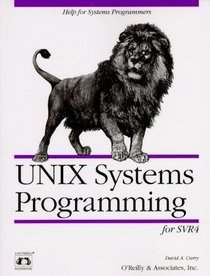Search -
UNIX System Programming for System VR4 (Nutshell Handbook)
UNIX System Programming for System VR4 - Nutshell Handbook
Author:
Any program worth its salt uses operating system services. Even a simple program, if practical, reads input and produces output. And, most applications have more complex needs. They need to find out the time, use the network, or start and communicate with other processes. Systems programming really means nothing more than writing software th... more »
Author:
Any program worth its salt uses operating system services. Even a simple program, if practical, reads input and produces output. And, most applications have more complex needs. They need to find out the time, use the network, or start and communicate with other processes. Systems programming really means nothing more than writing software th... more »
ISBN-13: 9781565921634
ISBN-10: 1565921631
Publication Date: 8/1/1996
Pages: 613
Rating: ?
ISBN-10: 1565921631
Publication Date: 8/1/1996
Pages: 613
Rating: ?
0 stars, based on 0 rating
Genres:
- Computers & Technology >> Operating Systems >> Unix >> General
- Computers & Technology >> Operating Systems >> General
- Computers & Technology >> Programming >> APIs & Operating Environments >> Unix
- Computers & Technology >> Programming >> Software Design, Testing & Engineering >> Software Development
- Computers & Technology >> Programming >> General




